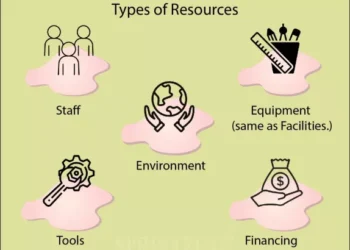Marketplaces are becoming more and more popular among ordinary shoppers, so many online stores see them as their next stage of development. Let’s try to answer the main questions that potential investors may have.
Why Is Everyone Talking About Developing A Marketplace App?
Will building a marketplace app solve all business problems? It’s more like the opposite — a marketplace app will create problems. It’s a business model that is radically different from classic e-commerce (you don’t sell goods out of your warehouse; you let third-party suppliers into your storefront). For a retailer to launch a full-fledged marketplace app, you have to change all the business processes, starting with the organizational structure. And sometimes even change the company’s goals and development vector.
The global experience shows that retail can scale only by creating marketplace apps. Because:
- The model allows to quickly expand the range of goods or services (this is important especially now when the life cycle of goods is low — in electronics, for example, the range may be renewed by 30% annually);
- With a marketplace app, e-commerce can develop the categories in which it has no expertise. Roughly speaking, you don’t need to know about bicycles to sell them on your marketplace — you put a merchant in your storefront who does;
- The marketplace app gives you an incredible jump in traffic as you get a huge number of product cards. This is important for those projects that have hit a traffic ceiling.
The Role Of IT Development
The marketplace is a business model. IT is a technical solution that allows you to build a business model on a platform that is in the cloud. Theoretically, you could hire 5,000 people and make a notional Amazon without an IT platform — just schedule the business process and delegate some specific work to each employee. But an IT solution gives you the opportunity to reduce costs.
How To Properly Allocate Resources Between The Components Of The Marketplace App
There is a classic triangle, known to all startups. If by resources we mean effort and finances, it can be different at each stage. At the startup, it’s probably in development. At the development and scaling stage, of course, marketing. But service is also important; we can’t do without it.
If we optimize a business, we have to optimize it. If you pay attention to only one thing, you can fall into the misconception of “local optimization. It has little correlation with overall optimization. We’re not getting anywhere.
Back Office
It all depends on the tasks and needs. Ideally, to cover all business processes, the development should include product management modules (PIM), order management system (OMS), merchant portal, billing system, and analytics module. Everything should integrate with external systems: CRM, logistics services, etc.
What Is Important To Consider When Developing Integrations?
What is important is the architecture, which will make it possible to integrate any additional services. And what exactly needs to be integrated depends on the business model. Large companies have a “zoo of technologies” inside. The main job is to tie everything together correctly.
What You Need For Development: Development Team, Technology Stack
If the task is to develop a marketplace app, then the standard IТ-teams are from 3 to 9 people. Usually, there are two back-end, two front-end, and three QA. The number of teams depends on the modules.
The important thing is not the composition of the team or the number of employees, but the knowledge of the domain area. First, the Product Owner. Because no matter how many people you have, the product may end up not working precisely because of insufficient knowledge of e-commerce.
As for programming languages and other details, that’s secondary. Many developers use PHP and Symphony. What is more important here is that a bet must be made on adaptability, because in the future there may be cooperation with integrators. It is important to initially think of the system as an easily extensible product at any stage of development. If in 4 years someone wants to add any function in any programming language, they should be able to do this.
What Should Be Paid Attention To At The Stage Of Formulating The Terms Of Reference?
The terms of reference are far from being the first step in developing a marketplace app. This is a tool that solves specific problems. First, you need to formulate those tasks.
Find your business model, and write it out (this can take 3-4 months, maybe even half a year). It may turn out that this business plan needs to be implemented not only by development. Some parts can be solved operationally. You will see that part of the business model is covered by the cheapest solution on the market, which can simply be supplemented by some integrations. This may be enough to conduct an experiment and see if the model is suitable for you in principle.
In your terms of reference, consider the future marketplace app regarding 3 components:
- Business processes;
- IT architecture;
- The operating model. In the future, it can and should be changed as often as the situation requires. If in six months you want to give merchants the ability to add content themselves, it should be easily configurable.
From a development standpoint, it’s a lot of subsystems. So the platform has to be fast, adaptive, and guided by market knowledge.
How Much Does Development Cost?
It’s important to understand if the work consists solely of development: the license, creating the MVP, and refining it, without consulting — that’s one situation. Some startups approach the task very responsibly — they have many analysts, who describe and detail all the business processes in advance. And based on that, the requirements for IT are born.
But it is rare when an investor comes up with an almost completely ready base for developing a requirements specification. Usually, the largest part of the project budget must be spent on analytics.
Development depends on business processes. What problems do you want to solve by launching the marketplace? Depending on the problems, an IT solution is also written.







